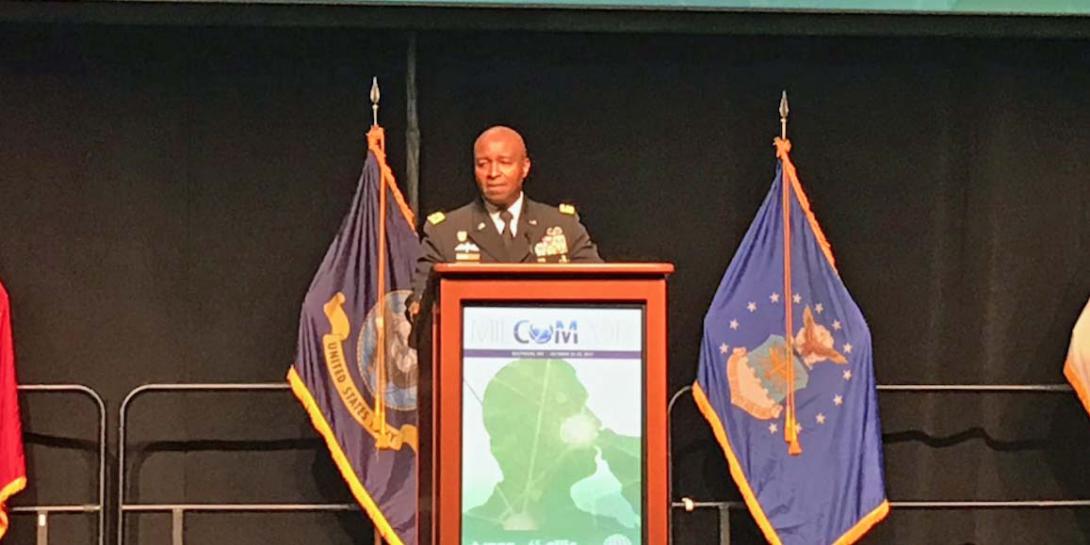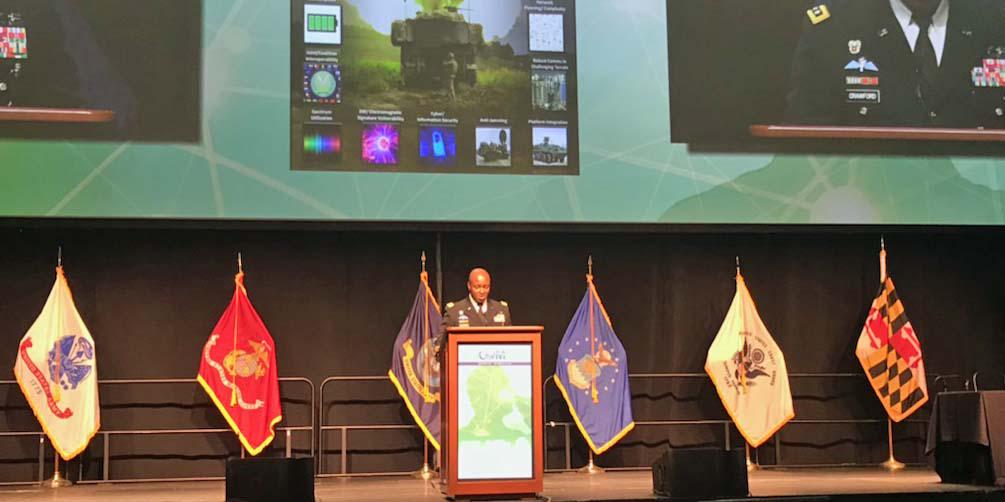The Army Must Adapt to Succeed in the Future
The Department of Defense is seeing its adversaries utilize off-the-shelf technologies, mobile networks and commercial applications that the U.S. military itself is not using as well. With this recognition, the “winds of change” are beginning to blow through the agency. The U.S. Army in particular must dust off some of its aging procurement processes and leverage commercial technology to regain the advantage over its peer adversaries, warned Lt. Gen. Bruce Crawford, USA, Army chief information officer (CIO)/G-6 at the MILCOM 2017 conference in Baltimore on October 24.
“The threat from our adversaries is real,” the general said. “They’ve harnessed unmanned aerial systems that when combined with lethal fire, they have the ability to decimate. Yet in our current state we can’t rapidly integrate and acquire new technologies. We are not postured to leverage the technology that the industry rolls out.”
Moreover, “the idea of not taking action” is not an option. With no action, the adversaries have and will maintain the advantage, the Gen. Crawford noted. And in that case the Army’s communication and tactical networks will become its “Achilles heel.”
As such, the Army is undertaking an extensive effort to modernize its network, an effort that began last year with a comprehensive review of all of its systems. “We concluded that the current tactical network would not survive against our adversaries,” he said. “Our network is too fragile, too complex, not scalable and offers limited mobility. We are easy to find as far as our electronic footprint, vulnerable to cyber attacks, and face size, weight and power issues.”
Gen. Mark Milley, USA, also recently outlined major acquisition reforms to improve how the Army procures what it needs.
In the near term, the Army will halt programs that cannot be remedied, fix programs that are needed “to fight tonight,” and pivot to an adapt and buy approach for commercially available technologies.
As the Army’s capabilities emerge in the future, Gen. Crawford stressed to the MILCOM audience that the service will be relying more on industry partners. “In the industry, investments are made that are bearing fruit, but at a rate much faster that the DOD acquisition process allows the military to harvest technologies,” he said. “We really need our industry partners.”
As for the emerging capabilities Gen. Crawford is looking for, technologies that reduce electronic signatures are at the top of his list. He wants command posts and their associated networks to be able to “hide” in plain sight. In addition, he would like to see simplified networking capabilities and easier configuration of networks and more resilient satellite communication (SATCOM) wave forms, along with anti-jam technologies. And to partly address size, weight and power issues, he would like to see technologies that have low power modes or options.
In addition, the Army is “paying close attention” to wireless network capabilities for use at command posts. For cloud-based data, the secretary of defense is pushing a move to cloud storage for both unclassified and classified data.
Regarding the Army’s top command and control needs as a joint force, Gen. Crawford identified tactical voice communication abilities, digital fires and a common operational picture for maneuver forces. Also, the Air Force, which already saw the need to take action in regard to software capabilities, provides an example to the Army of agile software development. Right now the Army is spending $3.2 million on software patches and waits for the current 120-day process to patch weapon-related software. The Army is running a pilot program that aims to provide more effective and swifter patches on 35 of its systems. In addition, the Army is working to decrease 17 different software lines down to two lines, the general said.
From industry, the Army’s CIO asks several things. First, is for industry to work with the Army in identifying policies that prevent technological development. He wants industry to understand how users interface with their products and share this knowledge with the Army. “It’s a team sport,” he said. Gen. Crawford also wants industry to show the military “the art of what’s possible” as far as emerging technologies and capabilities. “The reason why we have the network that we do is that figuratively we didn’t have our sensors in the right place,” he said. “We bought capacity, but we didn’t have to make sure it’s the latest and greatest.”
“Collectively as a team, we have the opportunity to redirect and deviate from the status quo,” he stressed. “What we decide to do today will impact the lethality of our force for the next 20 to 30 years.”






Comments